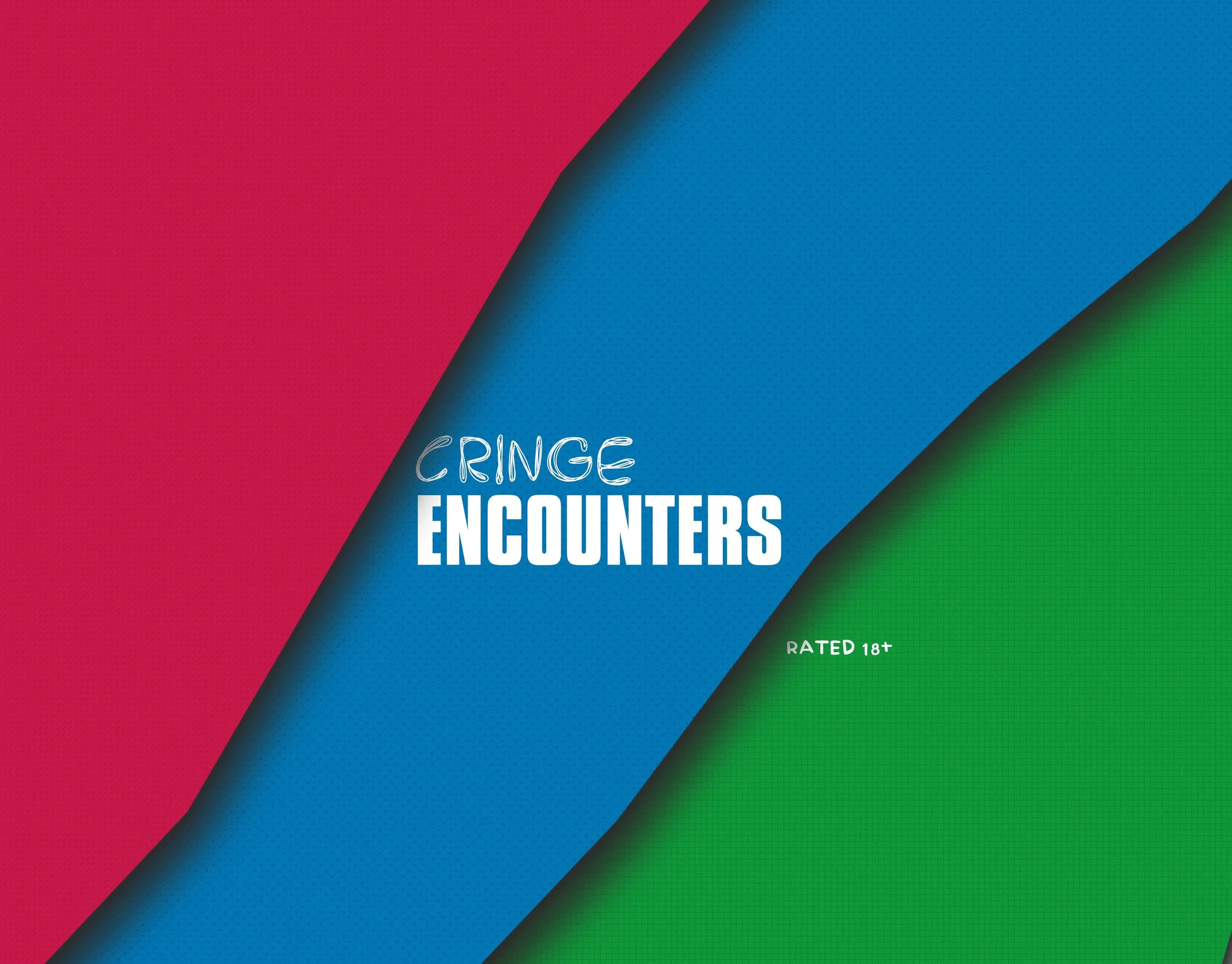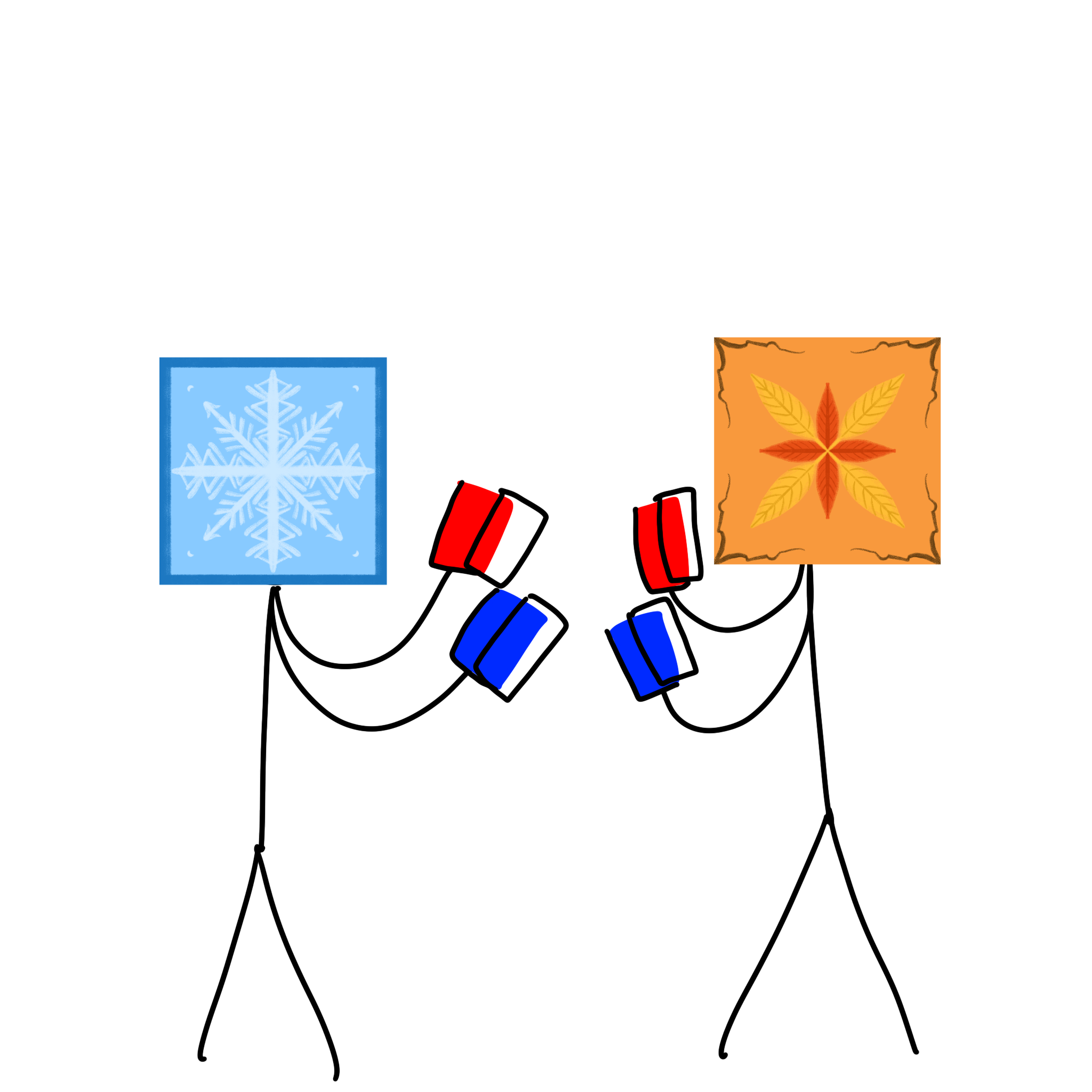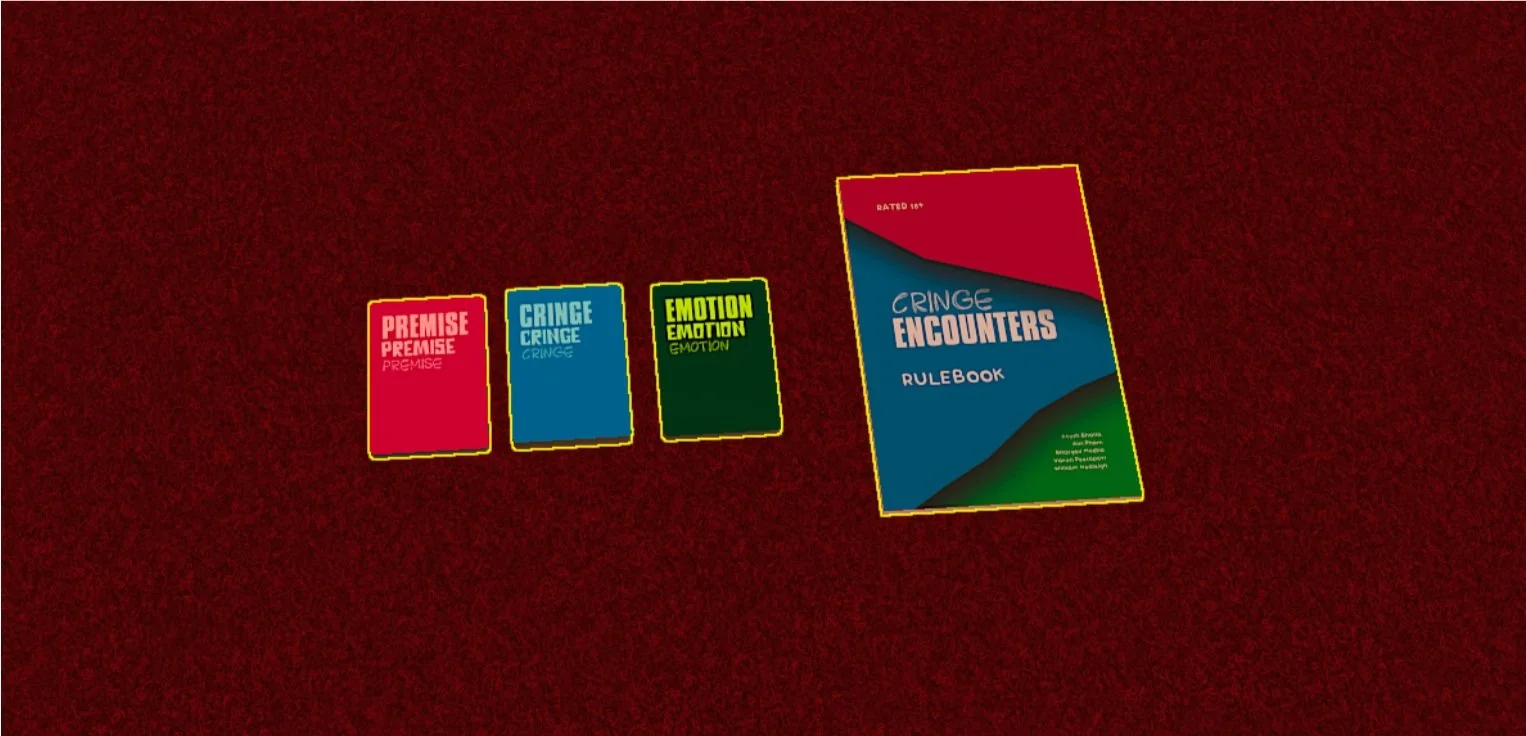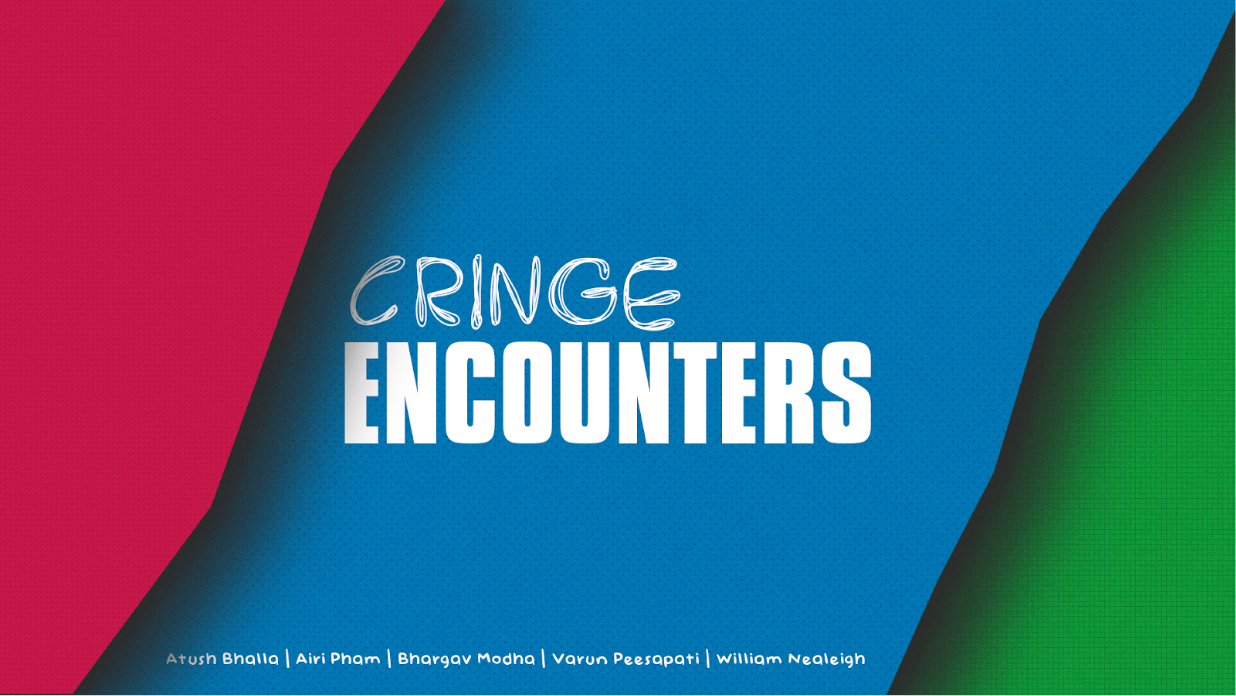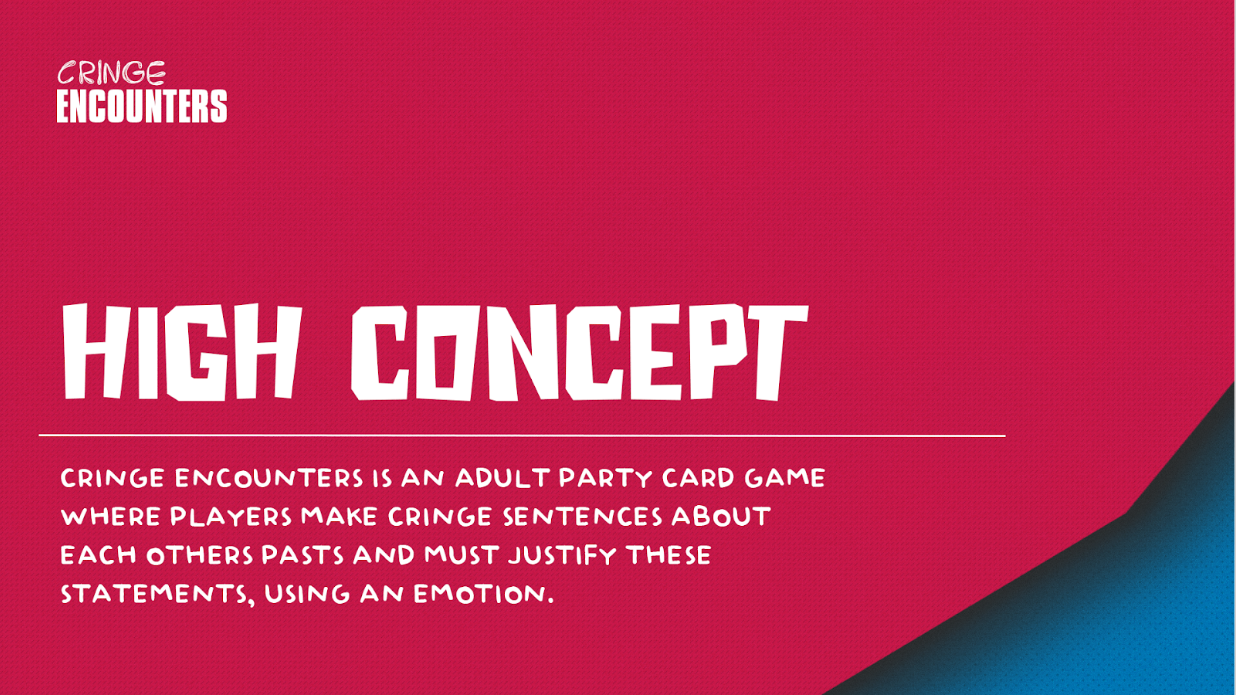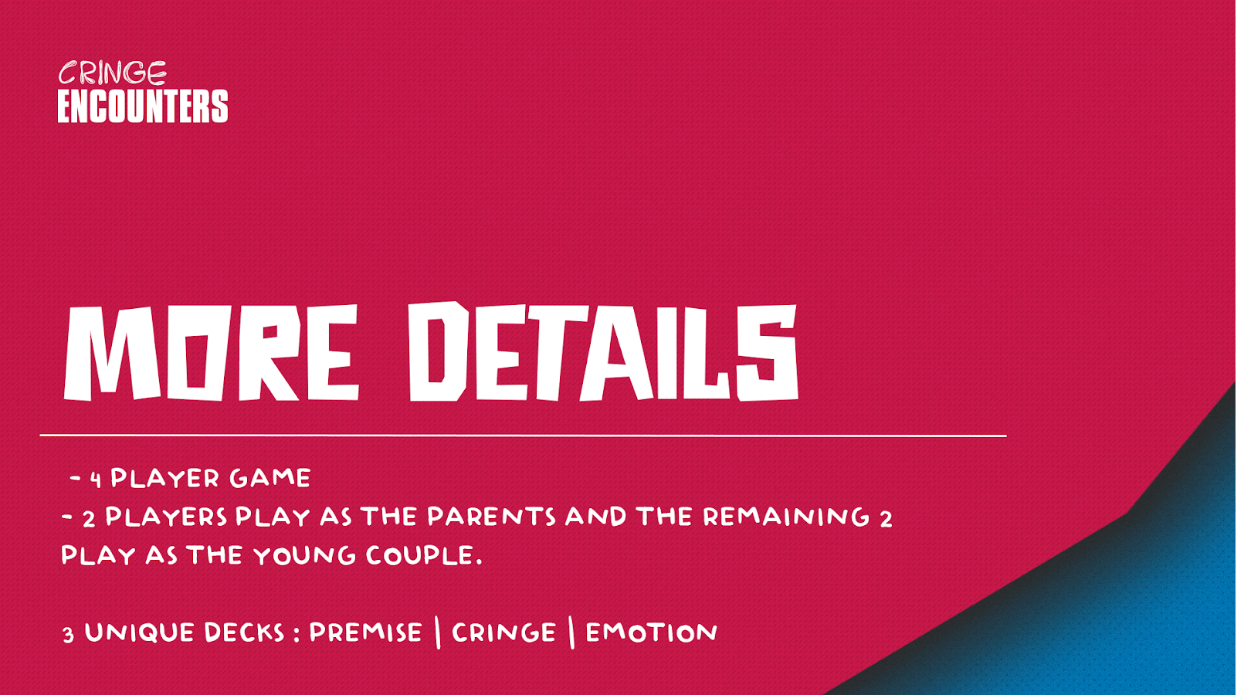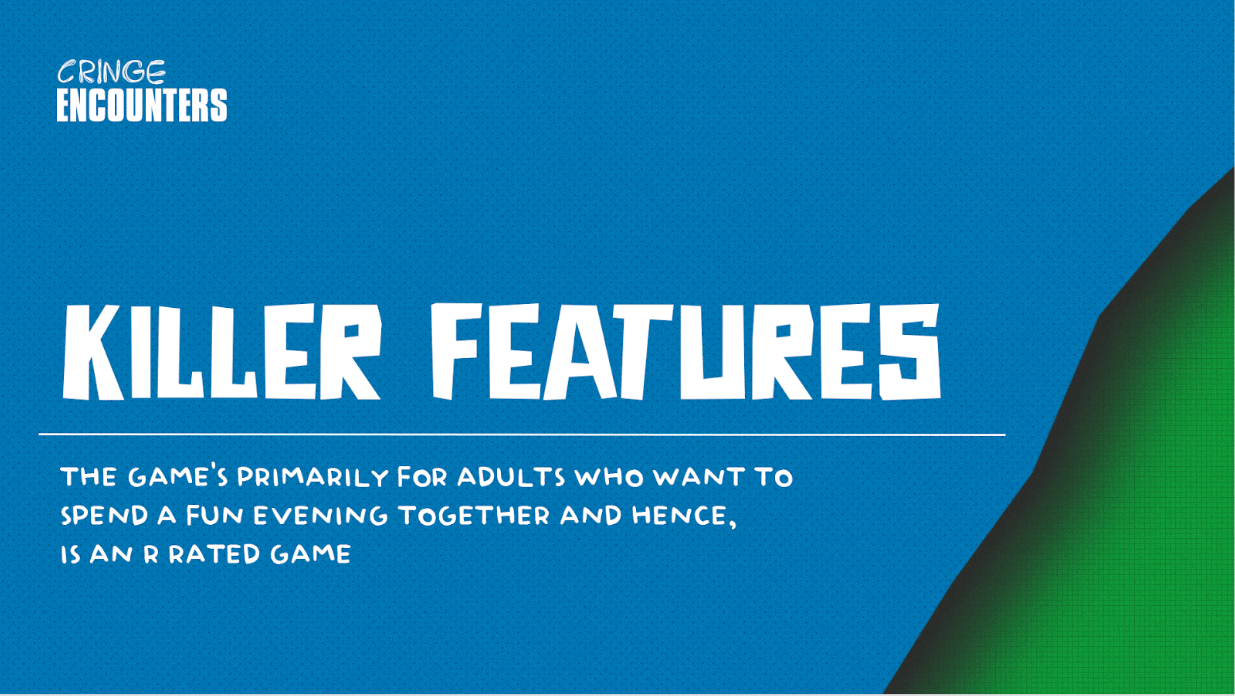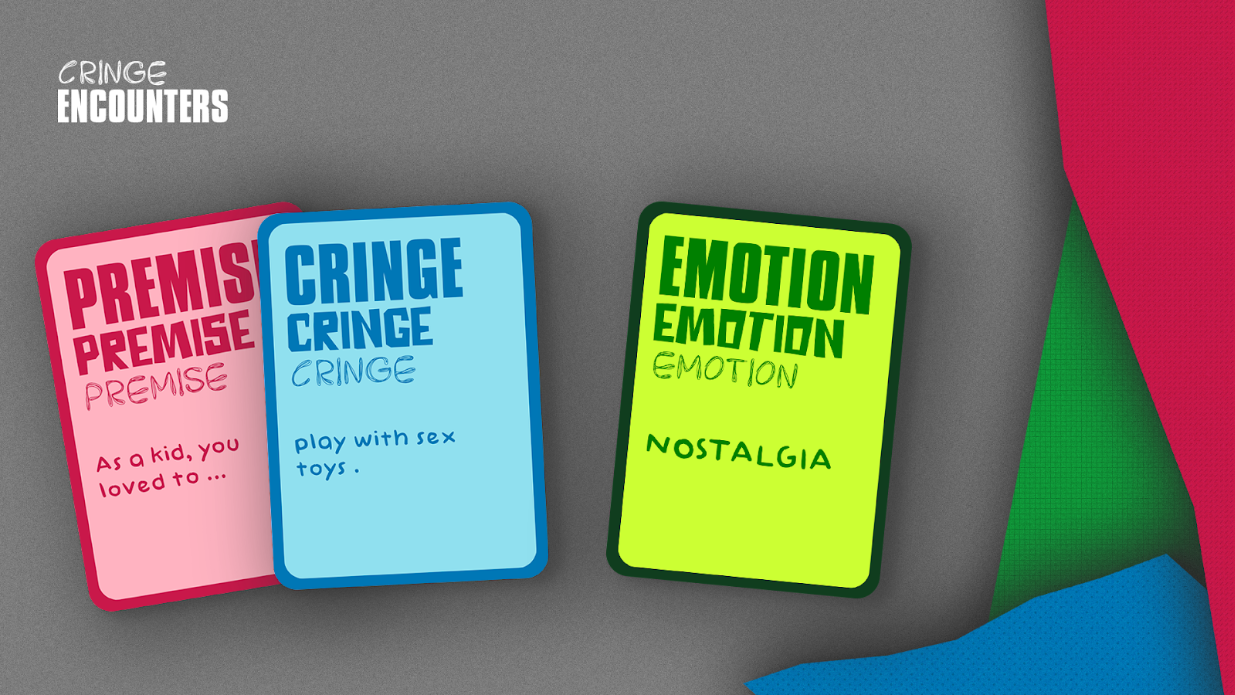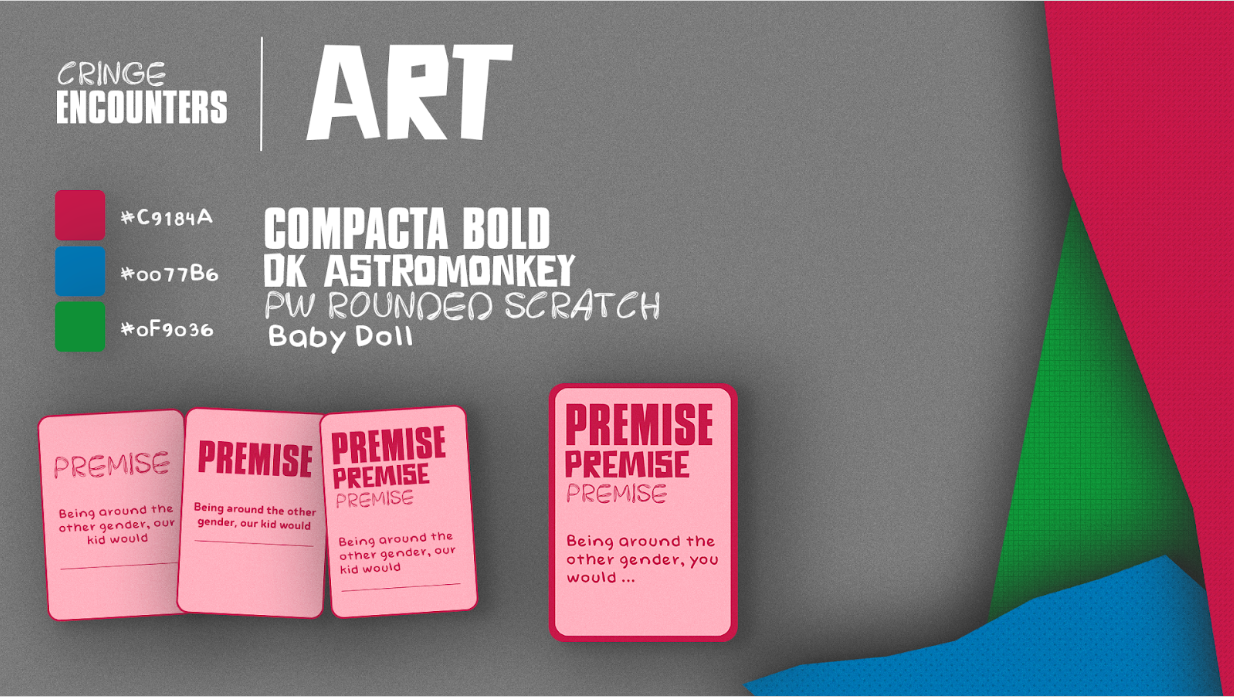Background
Cringe Encounters is a multiplayer party game designed for adults that are inspired by the popular game Cards Against Humanity. The game involves players making cringe-worthy statements about each other's past and then justifying these statements using a randomly picked emotion.
The goal of the game is to come up with the most amusing or outrageous scenarios and get the most laughs from the other players. The game's vision was to combine the appeal of Cards Against Humanity with the use of emotions, resulting in a unique and engaging party game experience.
My Role
I worked as a Director for the Game in a team of five. My role was to be responsible for the concept creating and leading the team. As part of the project at the USC Games Program, I pitched this game amongst 25 other game projects within the pool of 110+ students.
Tools
Presentation deck, Printed prototype, Tabletop Simulator
Timeline
3 months
Concept Inspiration
We looked for market opportunities to find a game that can be played on game nights and provide a hilarious experience for the players. One of the most common games played that provide this experience is Cards Against Humanity. Using that as an example, I tried to create my own spin on the game by using the emotion “Cringe” as a prompt that players need to pick and use when they try to match cards. We prototyped the game on Tabletop Simulator and playtested amongst my peers. After getting positive feedback on their experience, I decided to pitch the game.
Concept Storyline
The games play on the scenario when the child brings their girlfriend/boyfriend home to meet their parents. The parents create cringe statements about the child to their future daughter or son-in-law. These statements could be hysterical, and the son or daughter has to save their relationship by coming up with clever stories to justify these statements/
Premise - This card would be provided to the players who play the role of “Parents”. This would give them context on what they will tell their future son-in-law or daughter-in-law that could be embarrassing enough for them to break up!
Cringe - This would be a card with an embarrassing or cringy statement, also provided to the parents to come up with the whole story. For example, they could say “during your grandparent’s funeral, you wet your sheets”
Emotion - These cards are given to the son or the daughter trying to save the relationship, based on the emotion mentioned here. For Example “Regret” They could say - I regret doing that, that night because I missed them so much, but I was also the one that helped the most with the preparation of the funeral.
Gameplay Concept
How to Play?
This is a game for 4 players, named Summer, Winter, Autumn, and Spring. Two players will be the parents, playing as Spring and Autumn. They will be dealt 2 Cringe cards and 2 Premise cards. To play, they must choose 1 Cringe card and 1 Premise card, and use them to make a funny and cringe-worthy statement.
After that, one of the other two players will act as the son, playing the role of Spring. They must pick an Emotion card and associate that emotion with the cringe statement made by the parents. The goal is to come up with a story that justifies the statement to save their relationship with their significant other, Summer.
In summary, the game is about creating humorous and cringe-worthy statements and using storytelling skills to justify them, all while trying to save a relationship.
How to make it fun and engaging?
This game offers a delightful opportunity to playfully tease and poke fun at your friends. The game mechanics are designed to create situations that push your friends out of their comfort zones, leading to hilariously uncomfortable moments.
The joy of the game comes from the creative combinations of Cringe and Premise cards, which allow players to form statements that are simultaneously amusing and awkward. And, with the addition of Emotion cards, the unpredictability of the game reaches new heights, allowing for surprising and entertaining storytelling opportunities.
Overall, this game provides a uniquely enjoyable experience that is sure to leave players in fits of laughter, making it a fantastic addition to any game night or social gathering.
Player’s Motivation
This game is a refreshingly unique take on the classic game Cards Against Humanity. It offers a fresh perspective on gameplay that is both innovative and entertaining. With minimal effort required from players, the game is easy to pick up and play, creating a fun atmosphere with ease.
To succeed in the game, players need only bring their imaginative and descriptive minds to the table, using their creativity to craft statements that are both cringe-worthy and amusing. The storytelling aspect of the game encourages players to think outside the box and come up with unique justifications for their statements, making for an engaging and immersive experience.
In summary, this game is a breath of fresh air in the world of party games, offering a unique twist on traditional gameplay that is easy to pick up and incredibly fun. With its emphasis on creativity and storytelling, this game is sure to provide hours of laughter and entertainment for all involved.
Prototype
Cringe Encounters was originally prototyped in Tabletop Simulator. You can find the prototype here. With players getting a positive experience, I decided to pitch at USC Games and was picked amongst 25 other projects in a pool of over 110 pitches. After working with the team’s producer, we were also able to print the game on Game Crafter. Our budget for printing a single unit was $25 and we managed to produce the game for under $18.
Pitch Material
Takeaways and Learnings
Brainstorm is key
During the development process of this game, I had to brainstorm tons of ideas behind what idea kind of game I wanted. So I was constantly working with designers to come up with party game ideas and how to build upon existing ideas.
Leading is a skill
It was the first time I was responsible for other people instead of just working with them. Therefore, I want to create a welcoming environment for everyone to hear everyone's voices on important decisions regarding the game. I also had to keep track of each team member's responsibility and assign tasks according to their expertise and choices to keep them from overloading them with work.
